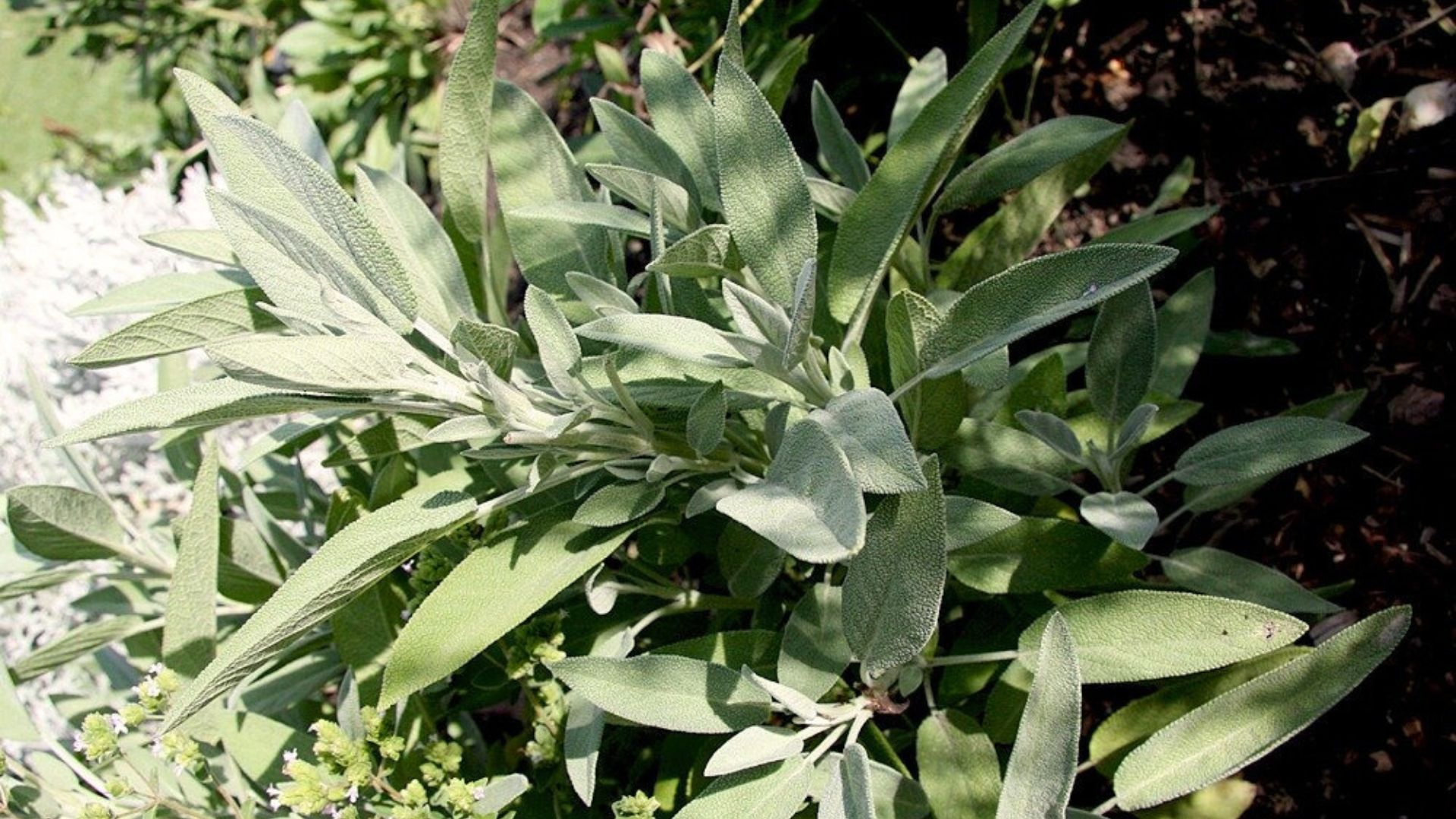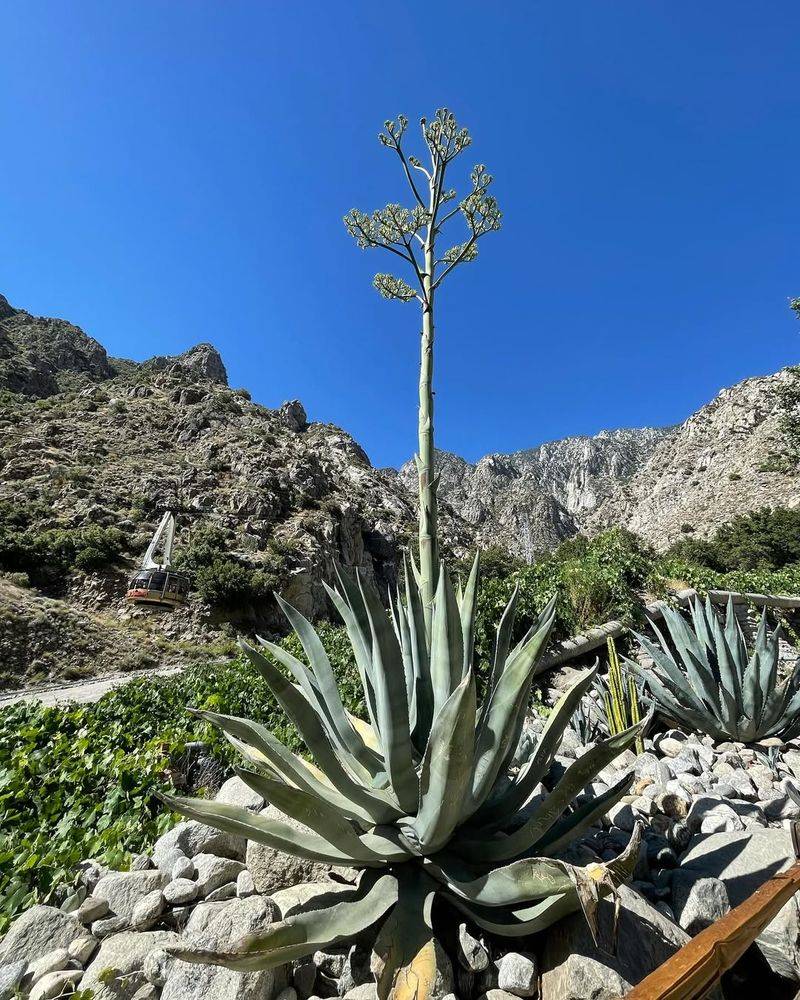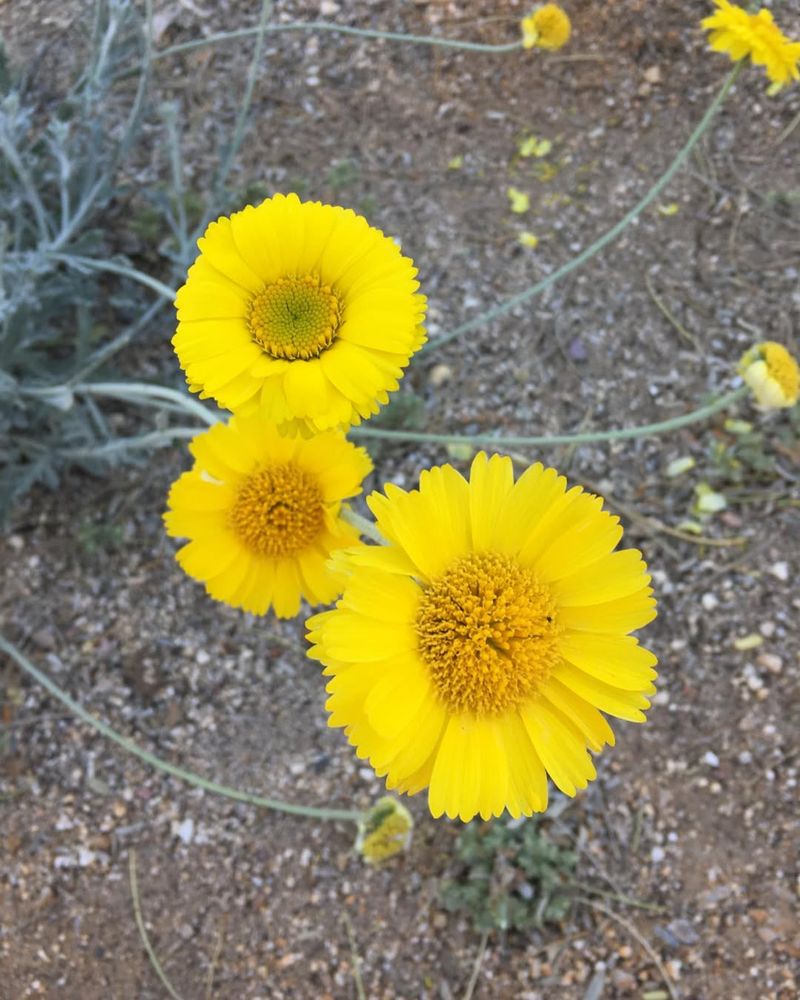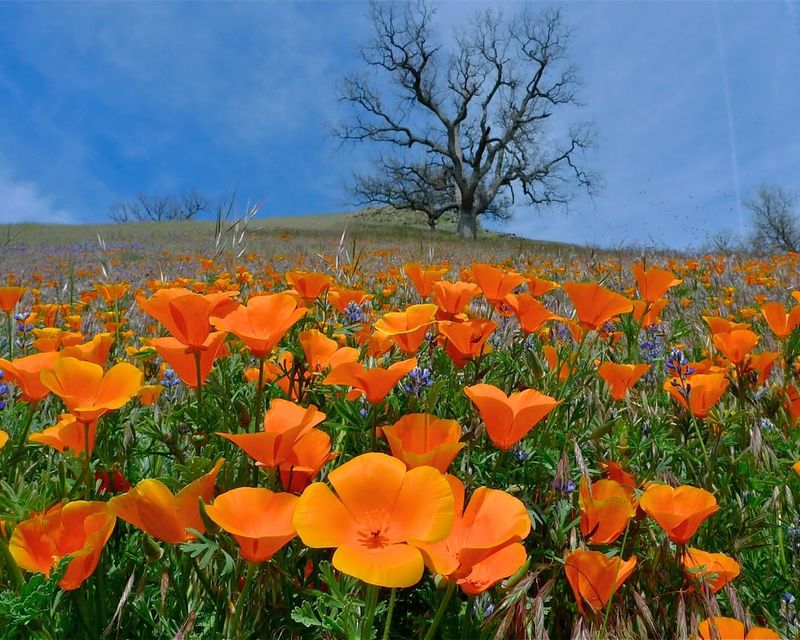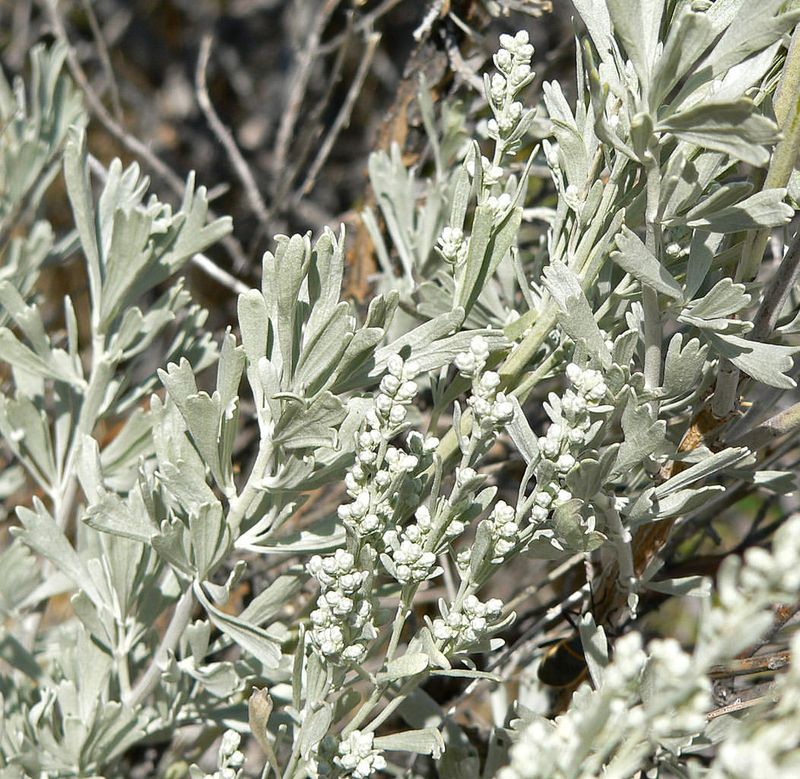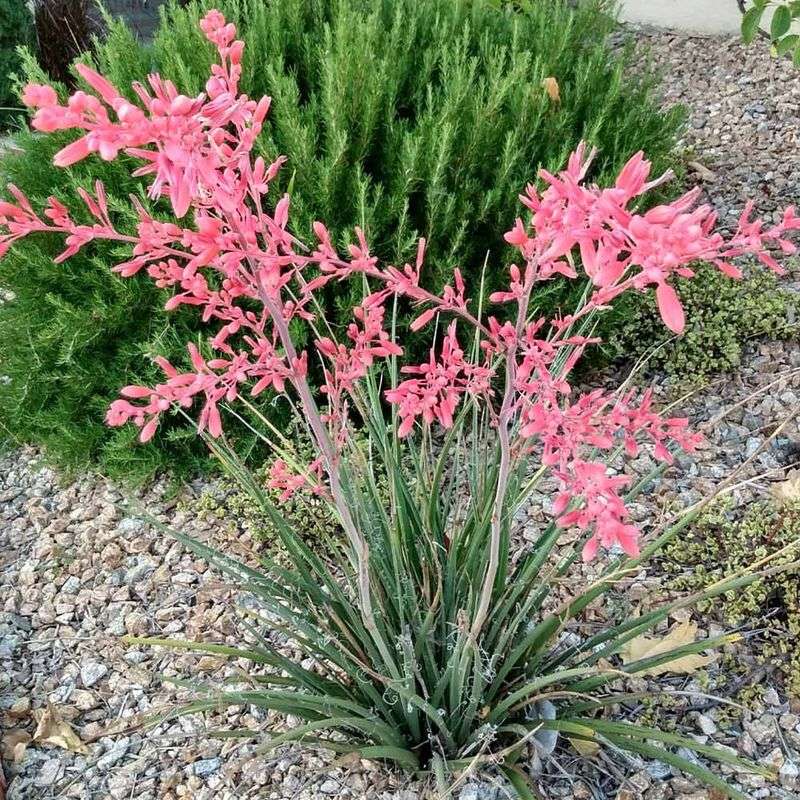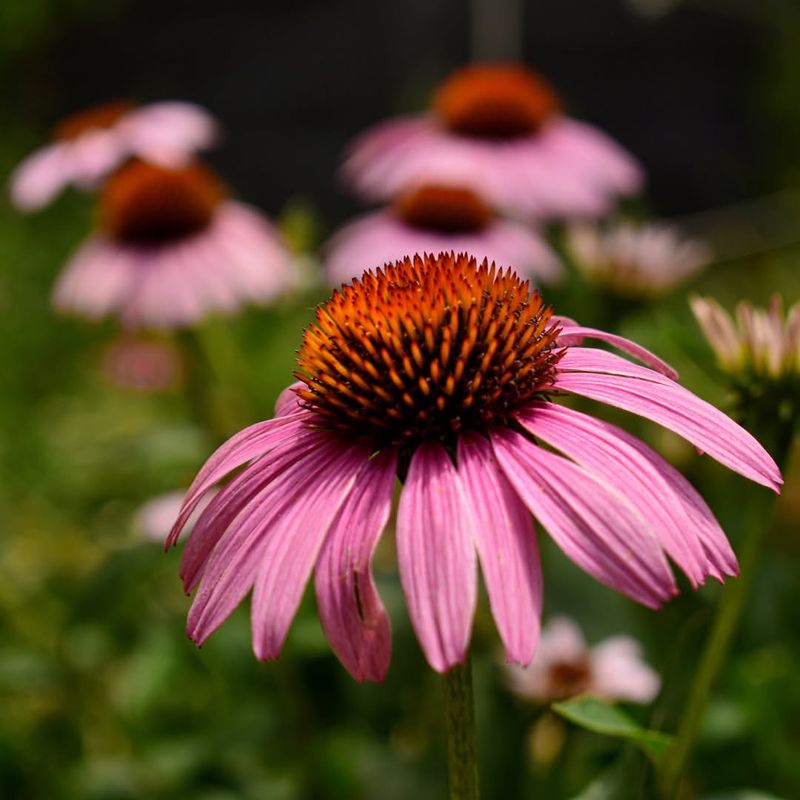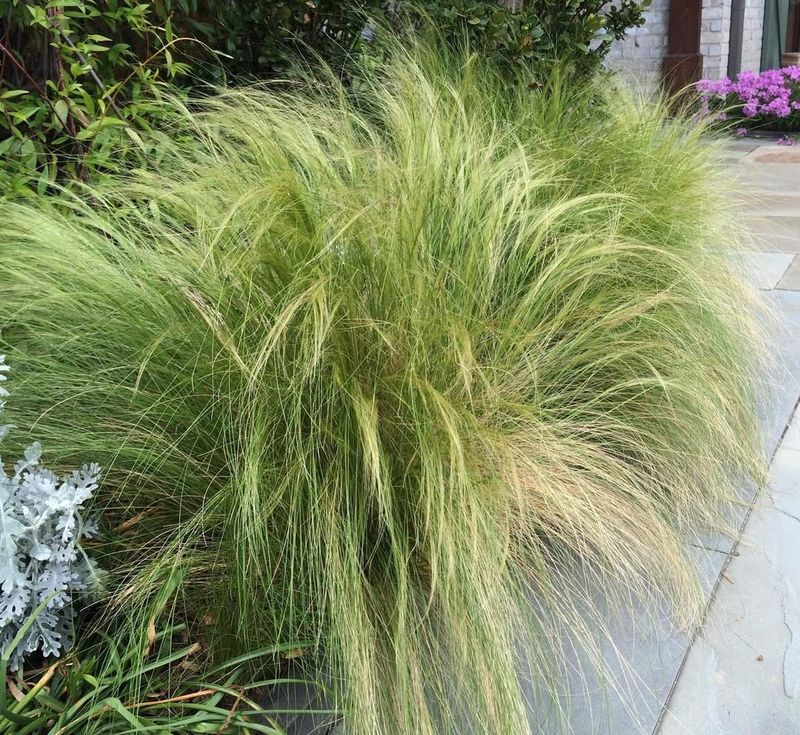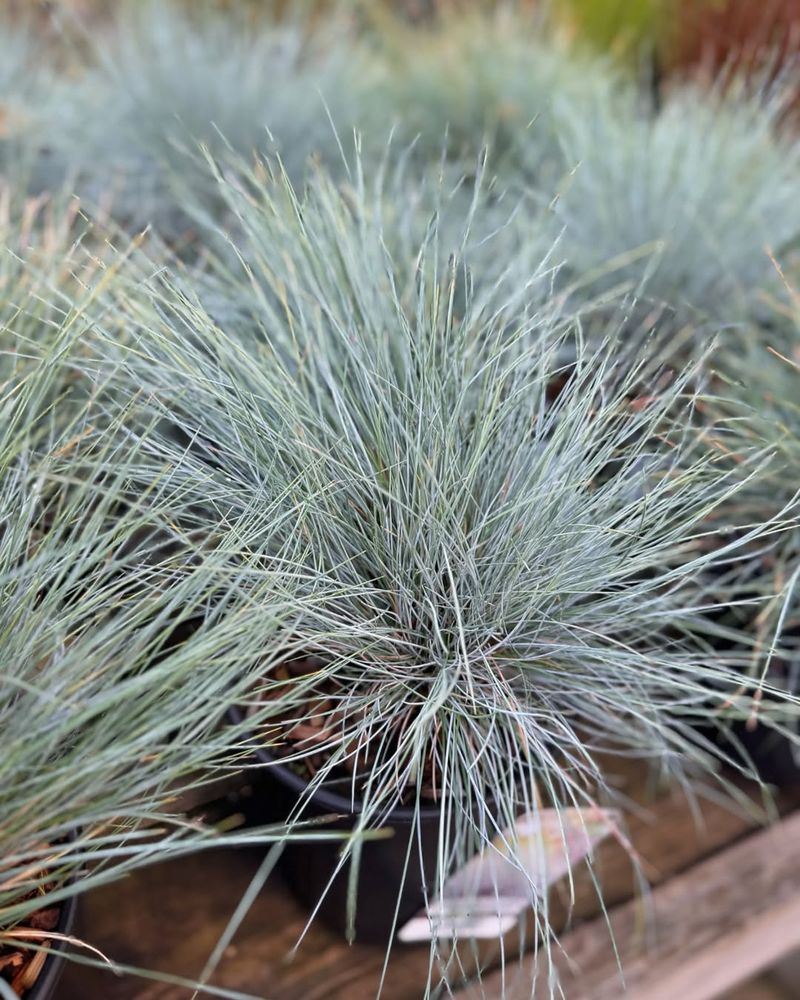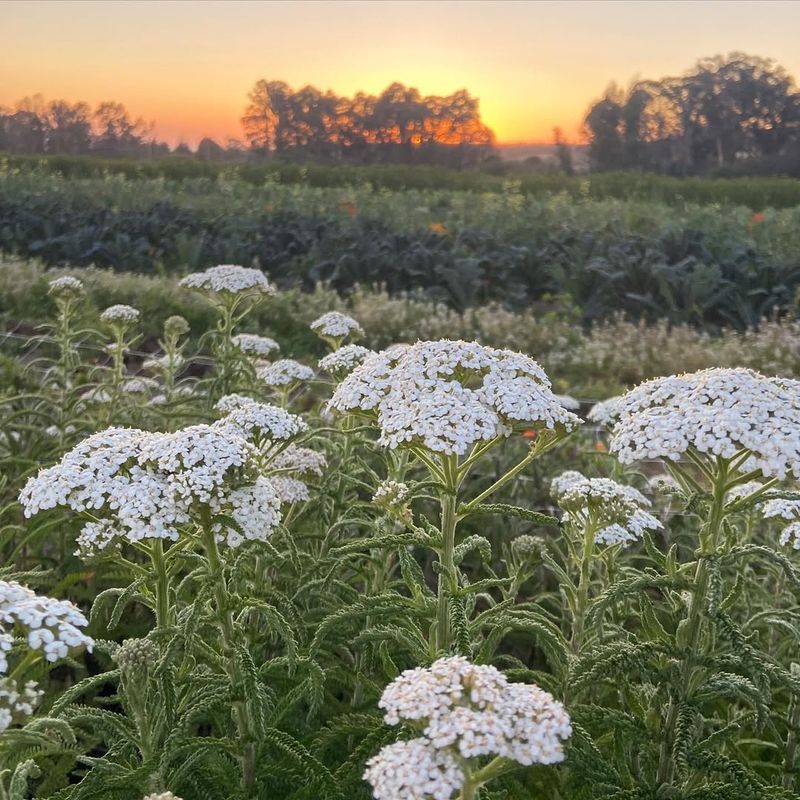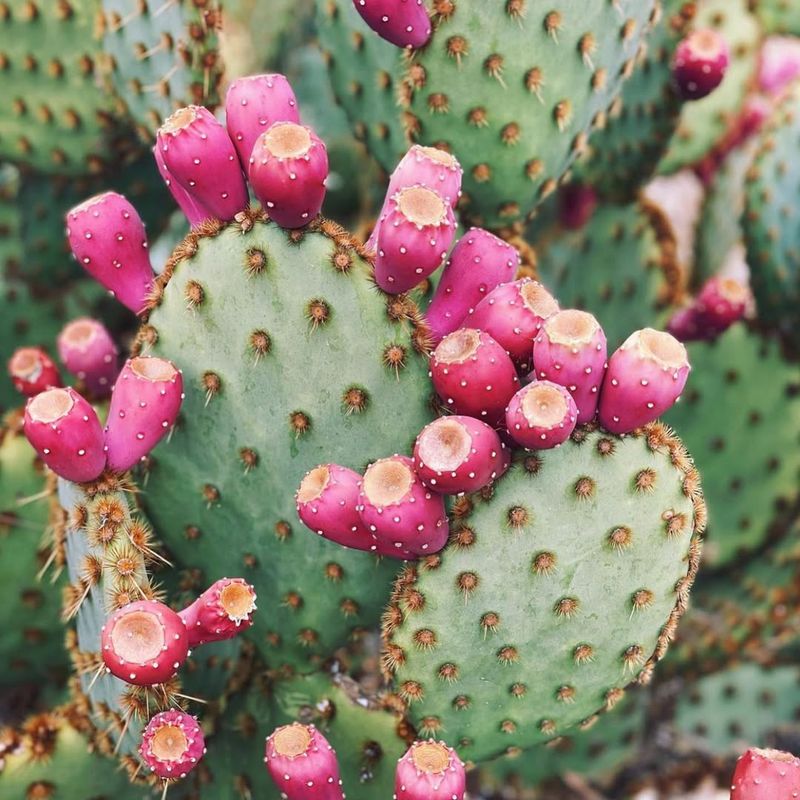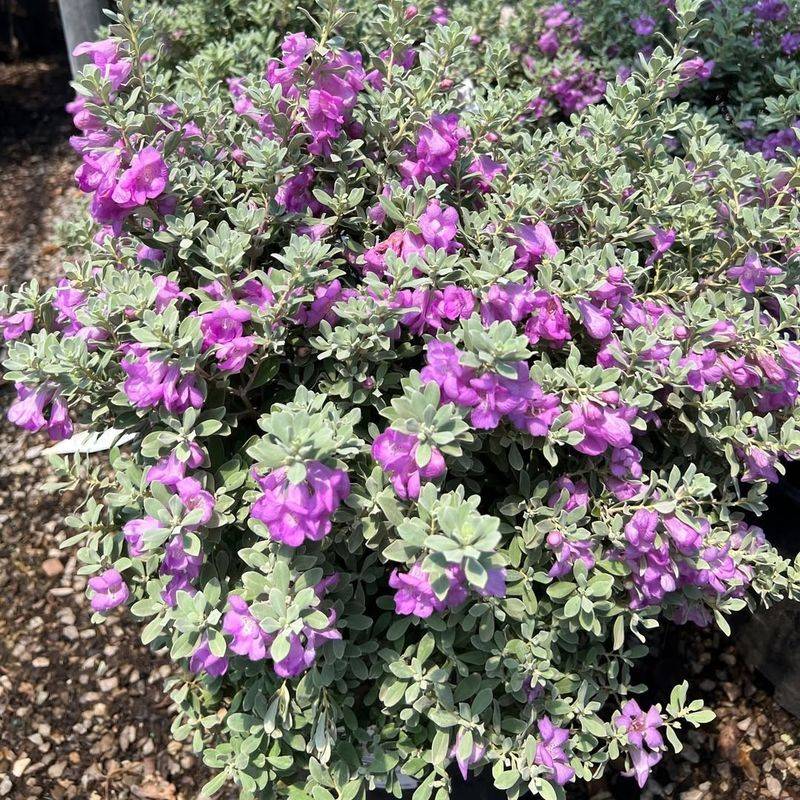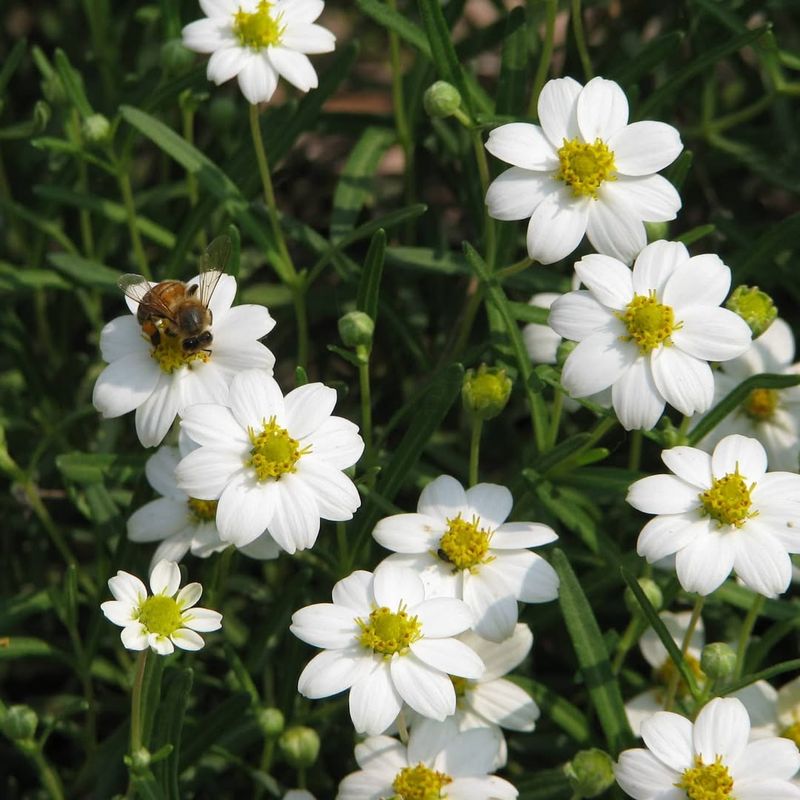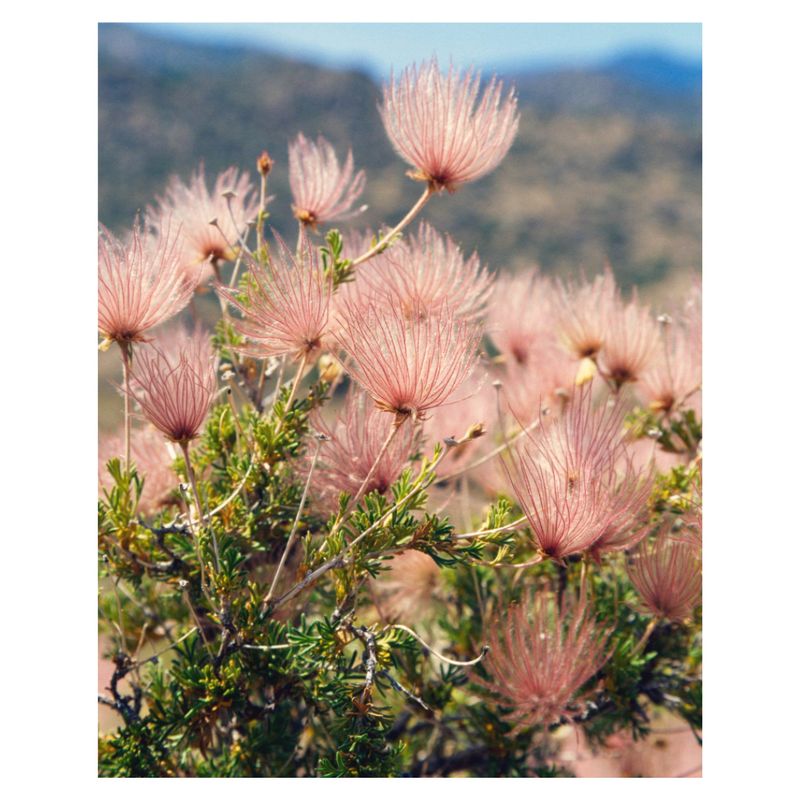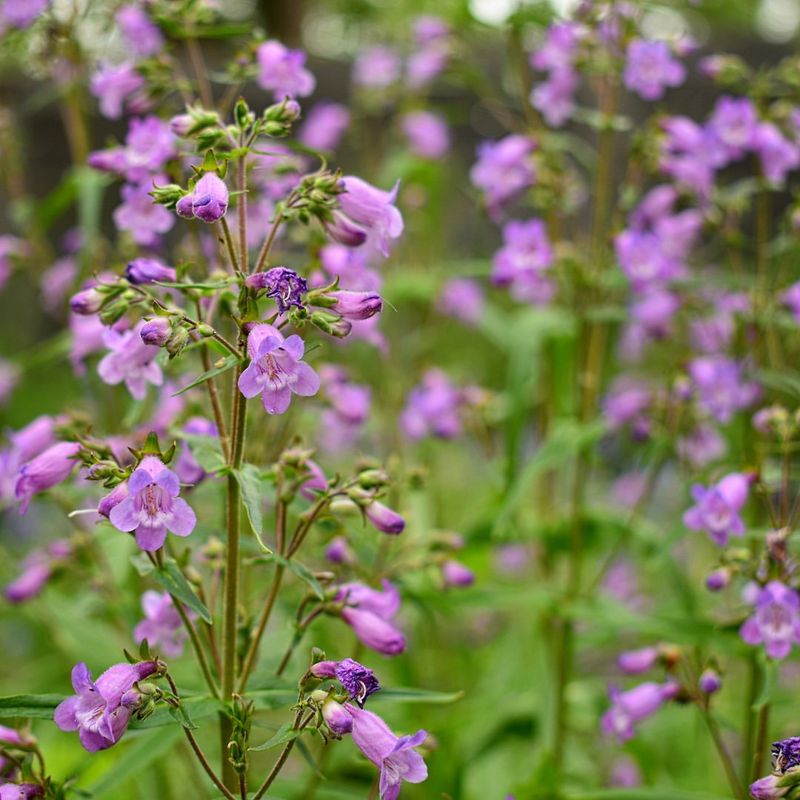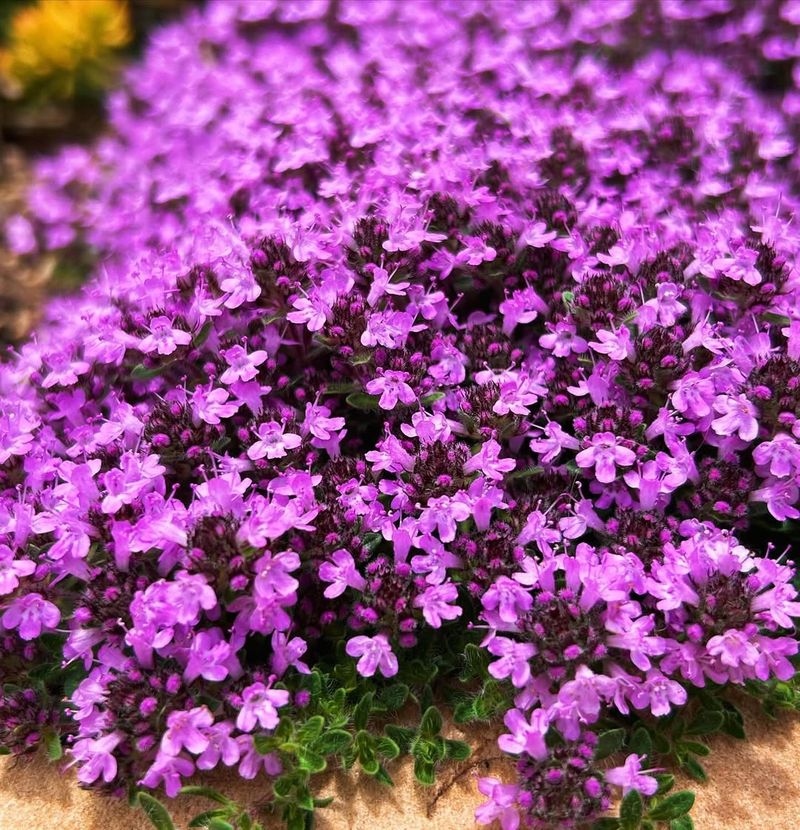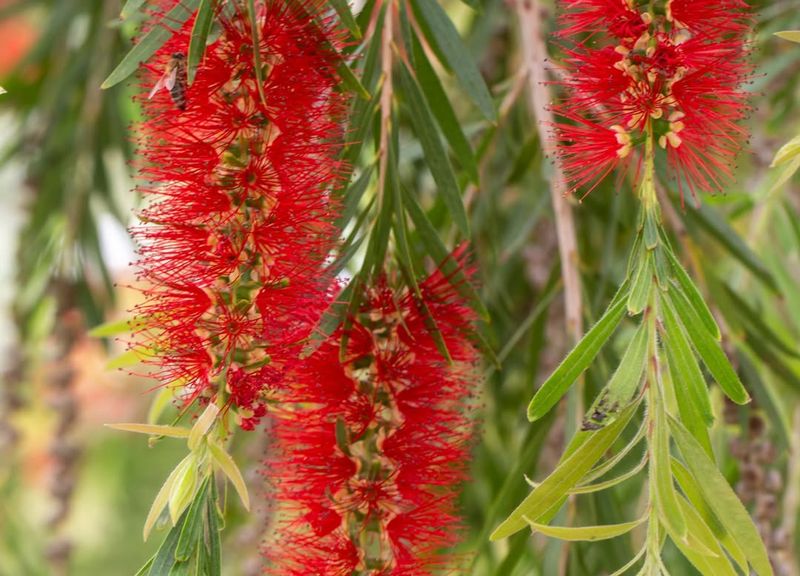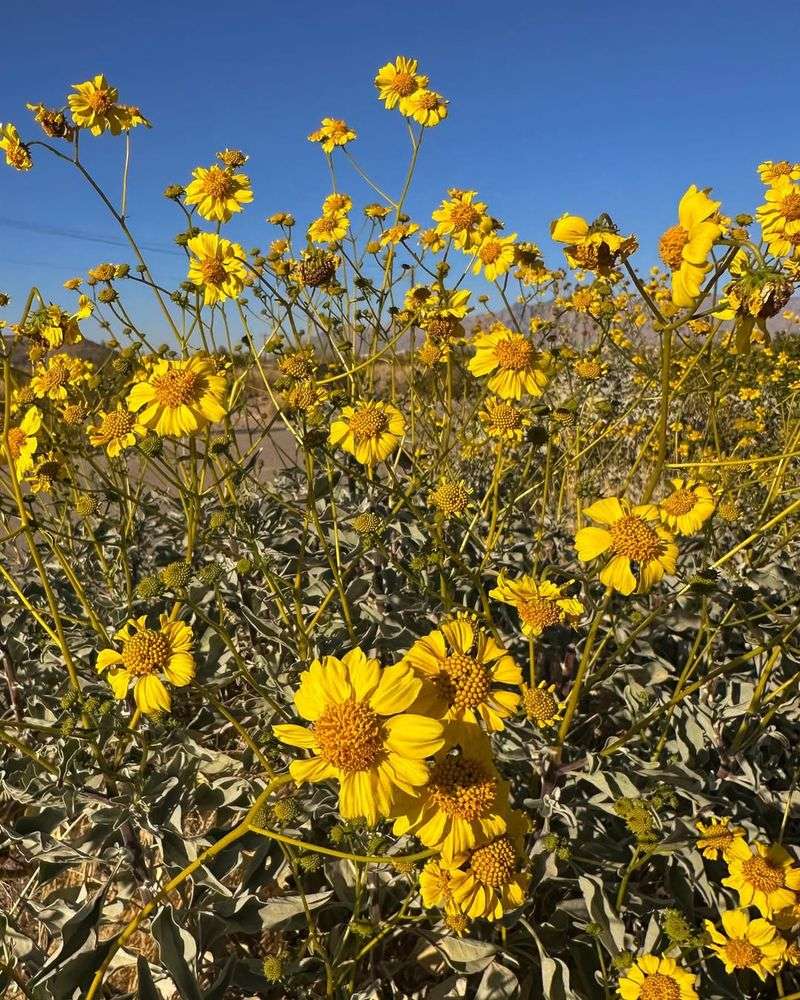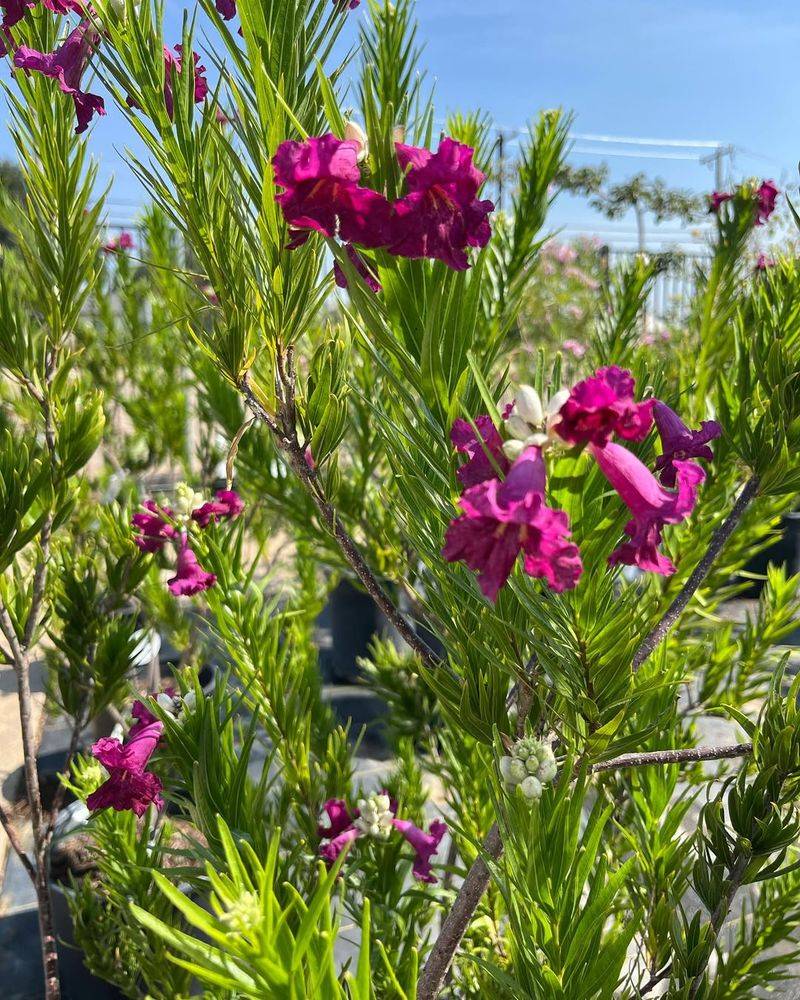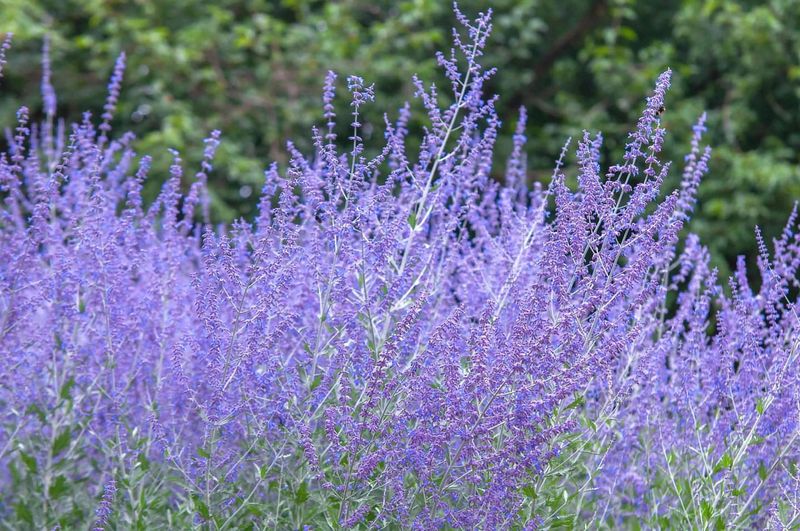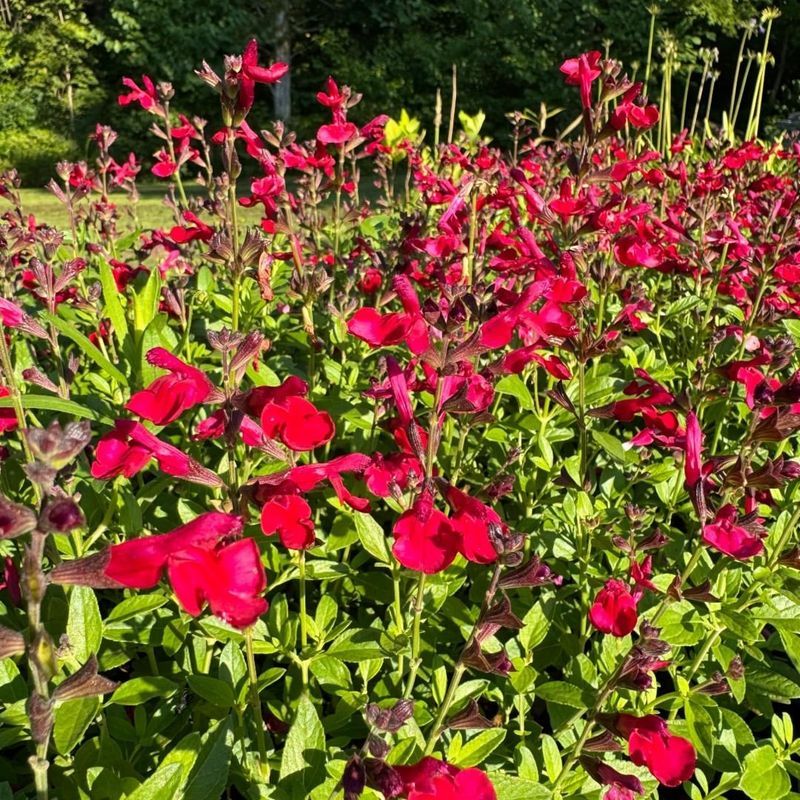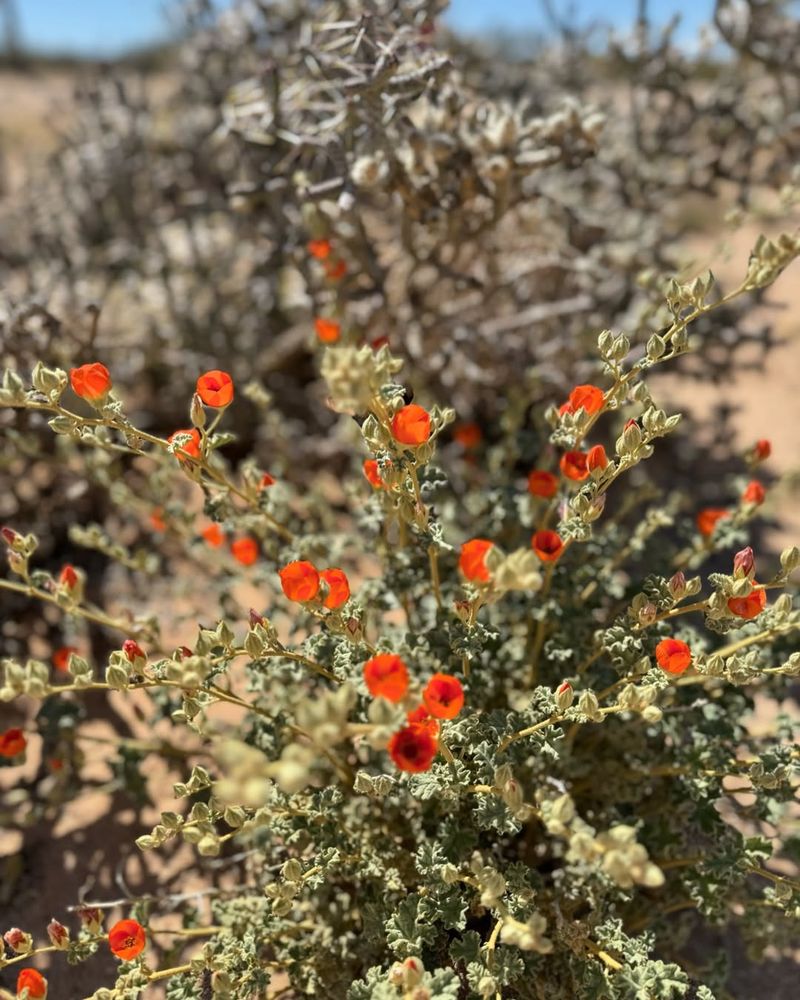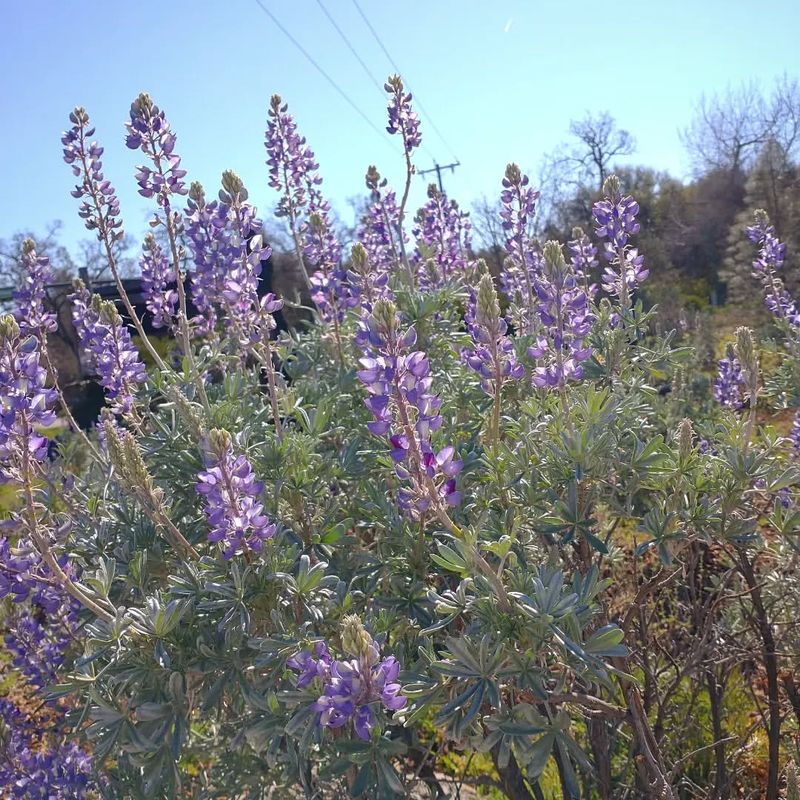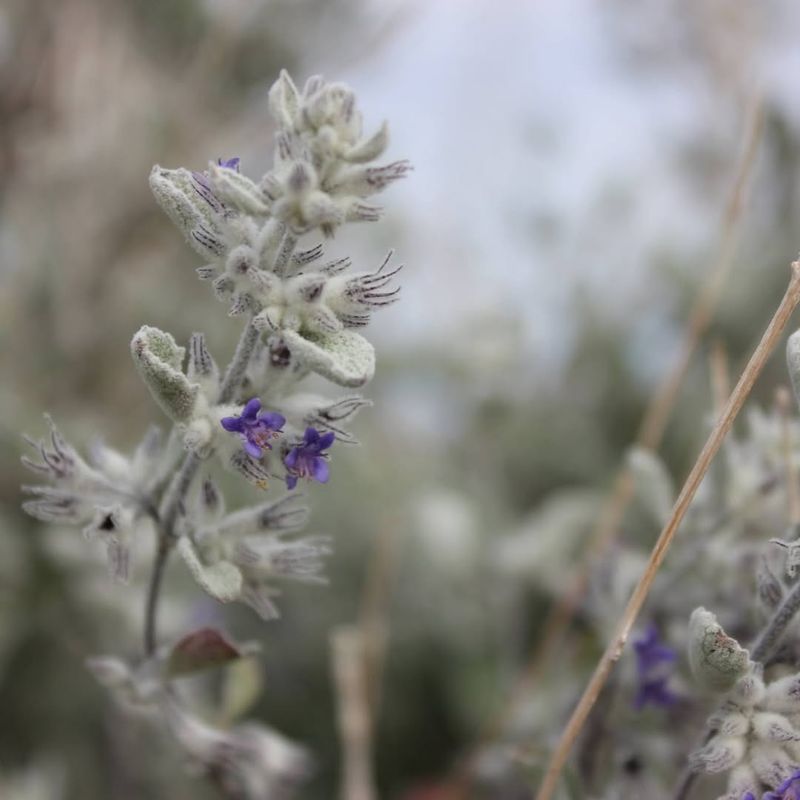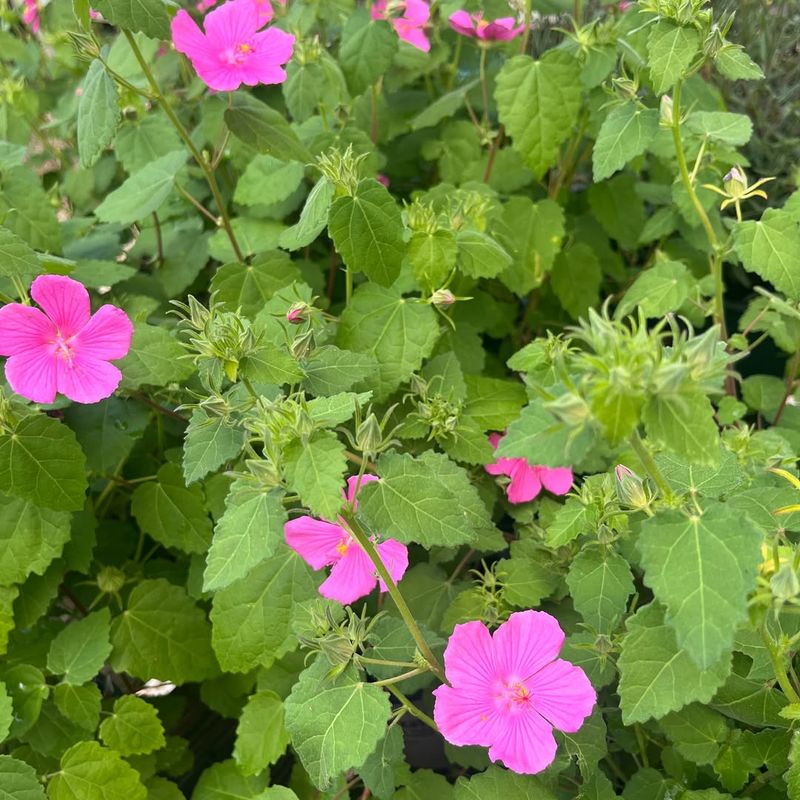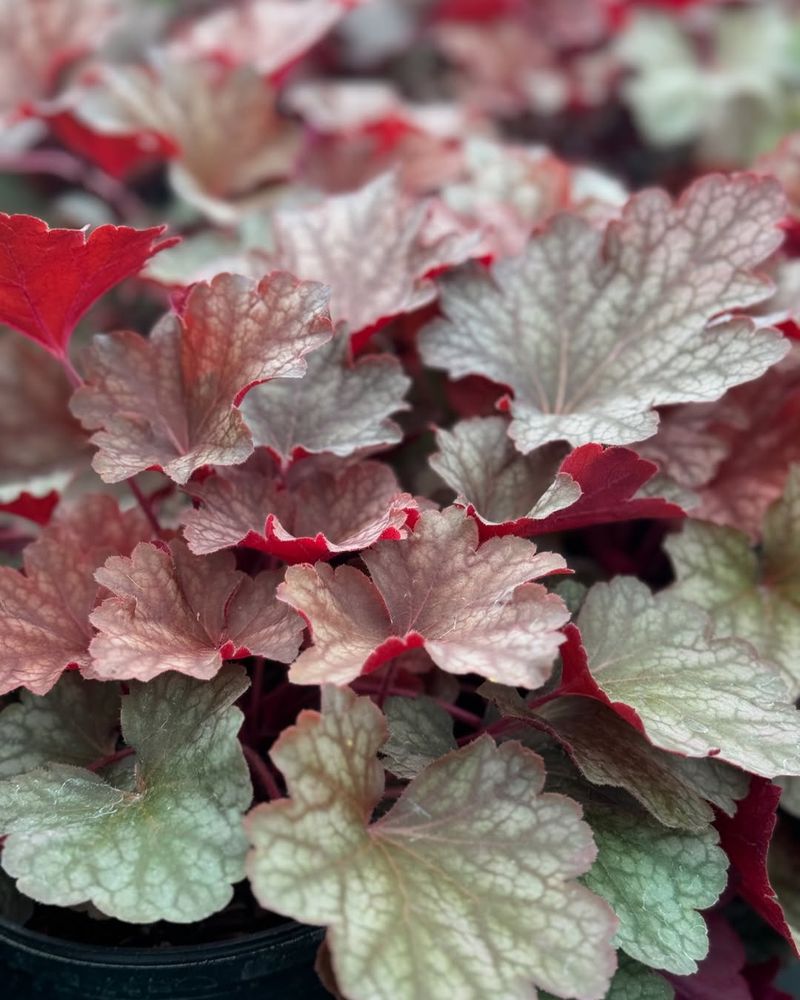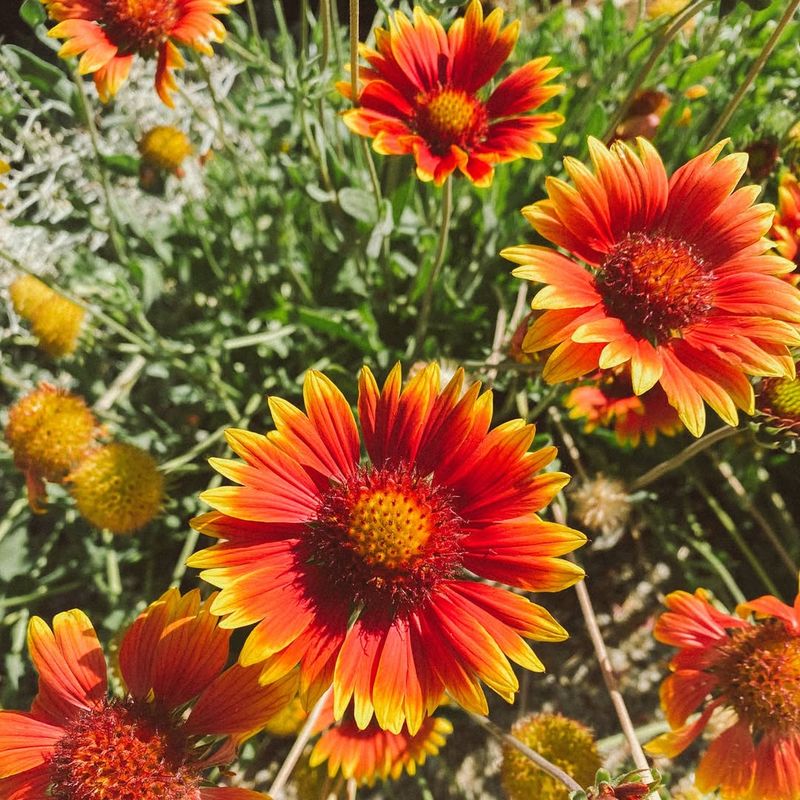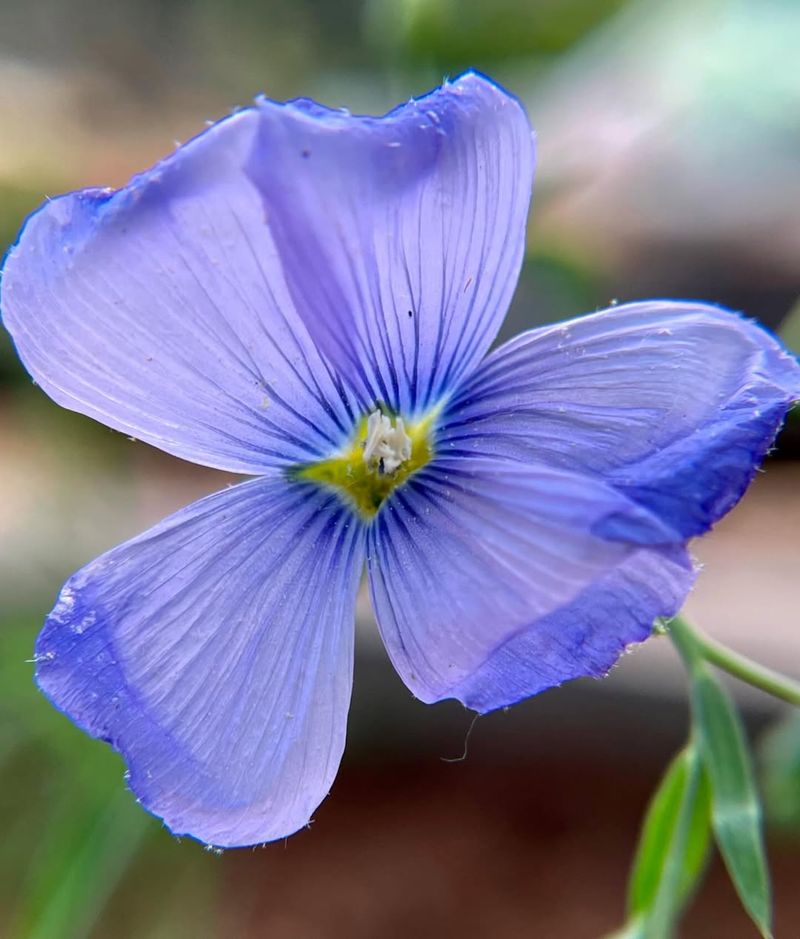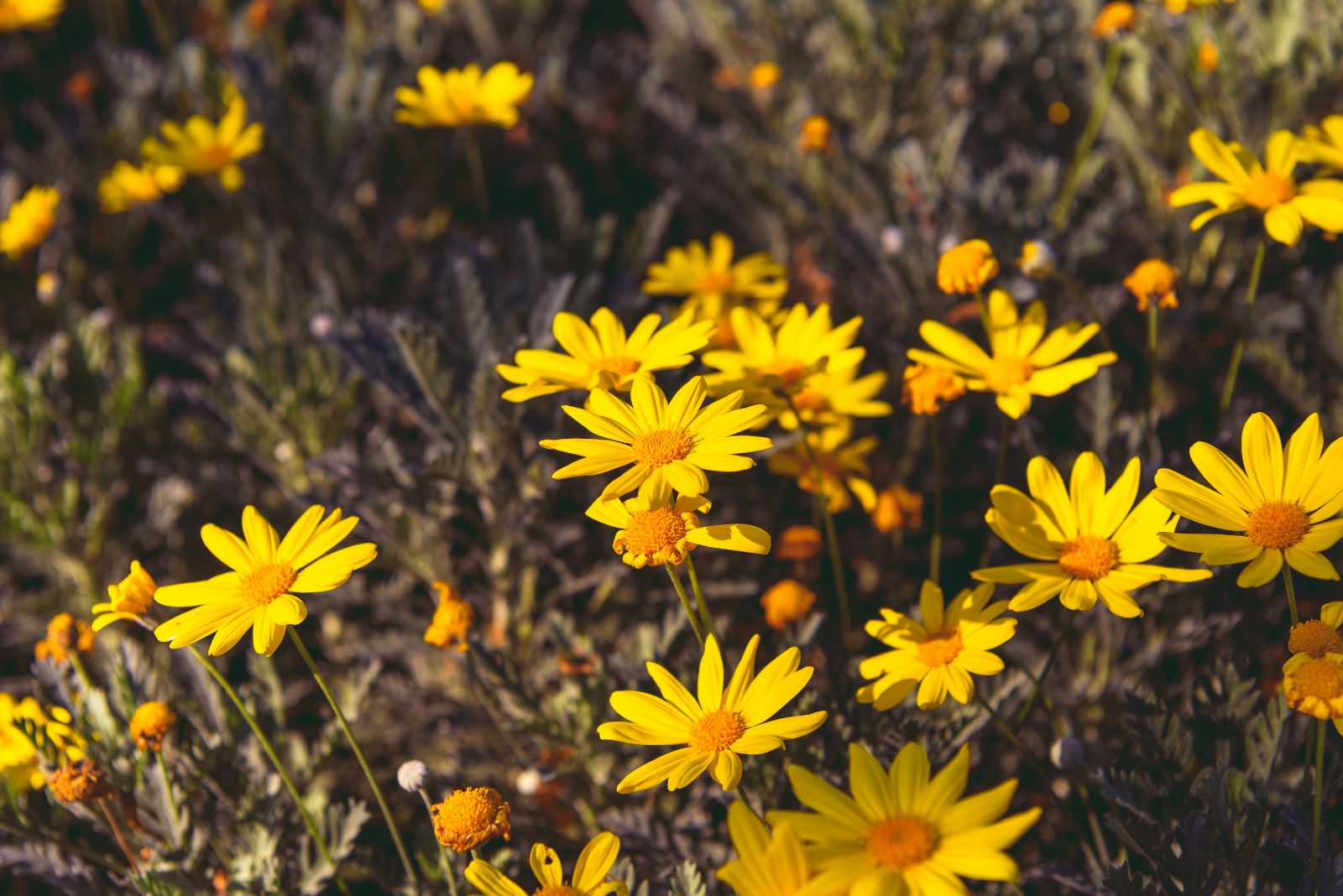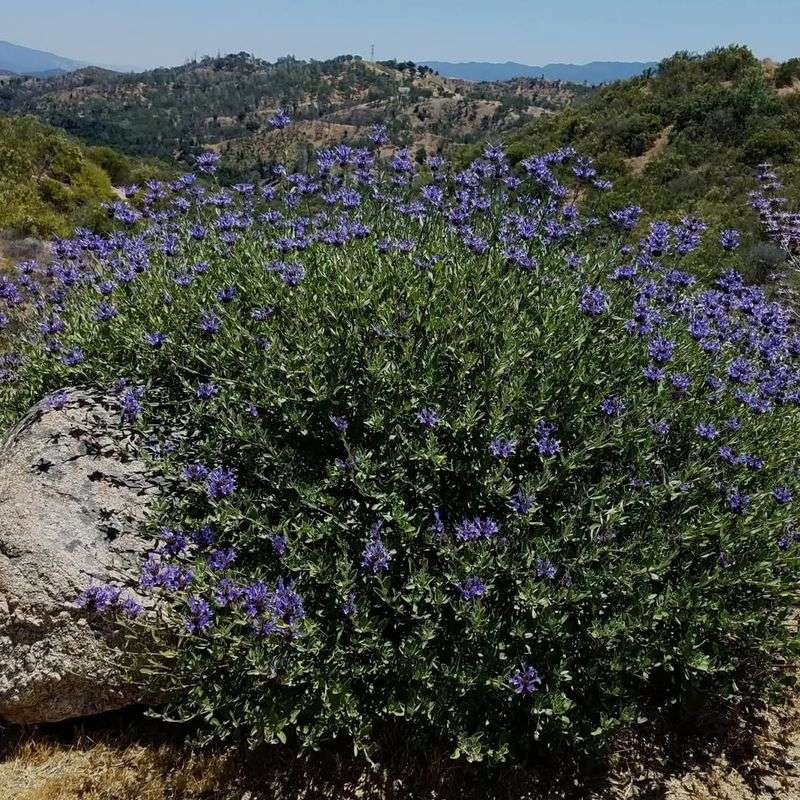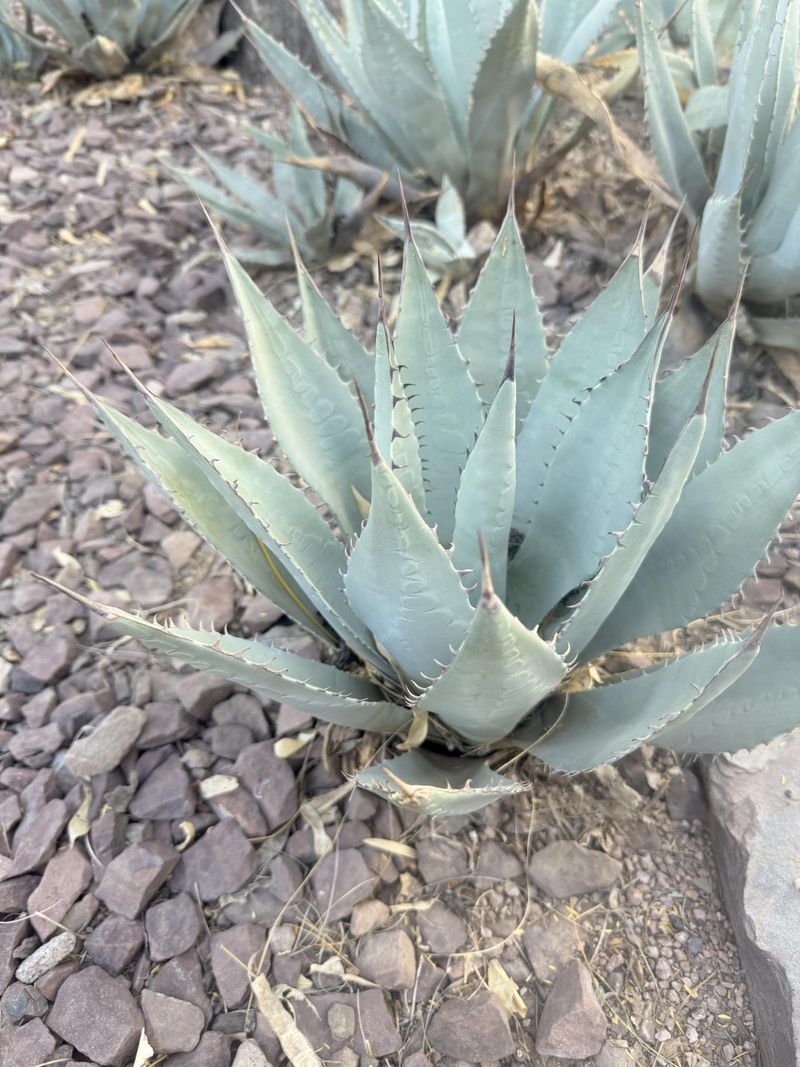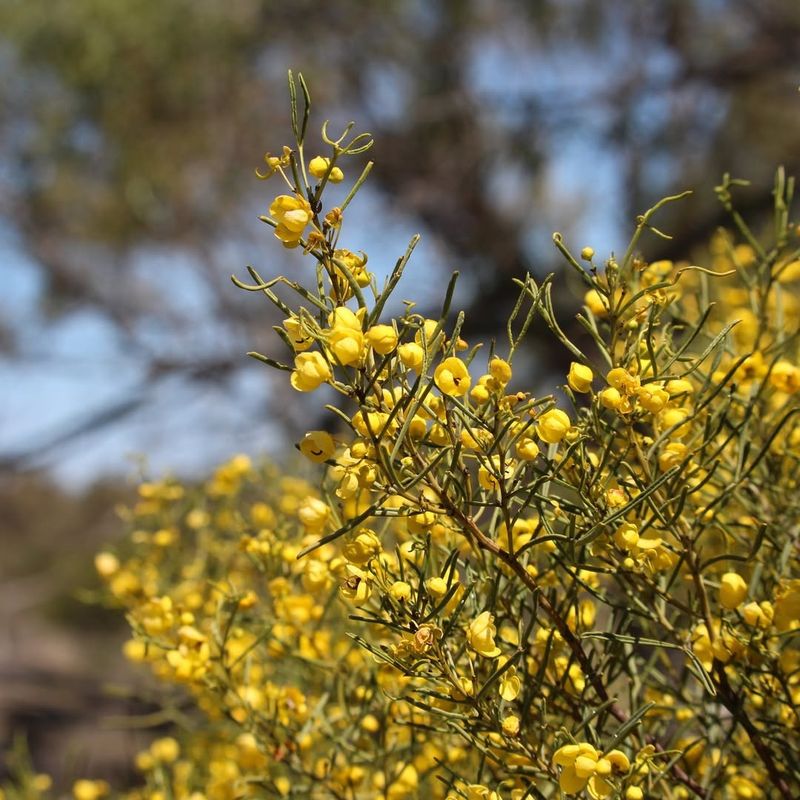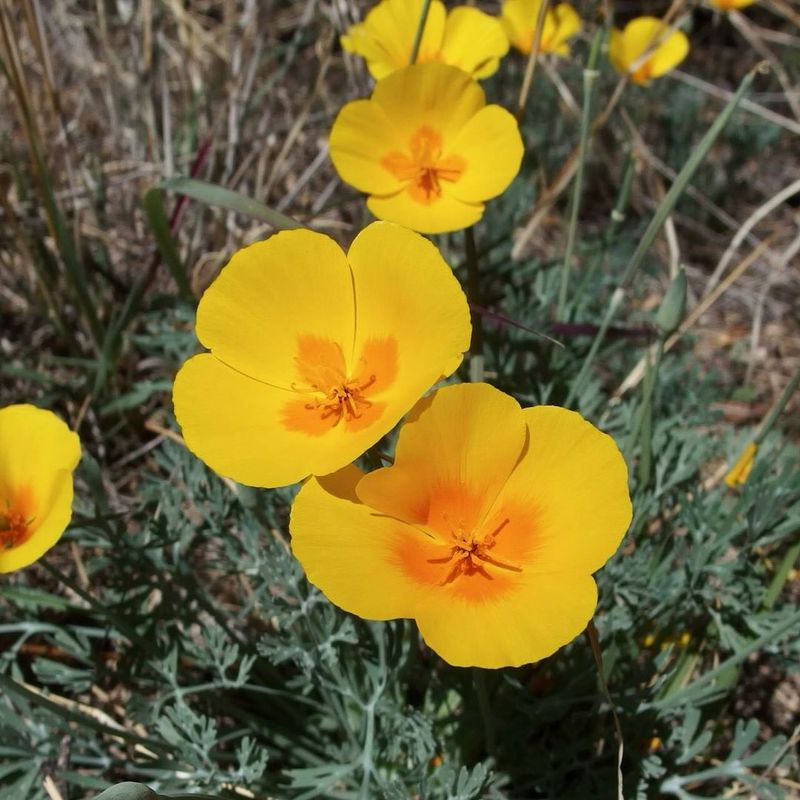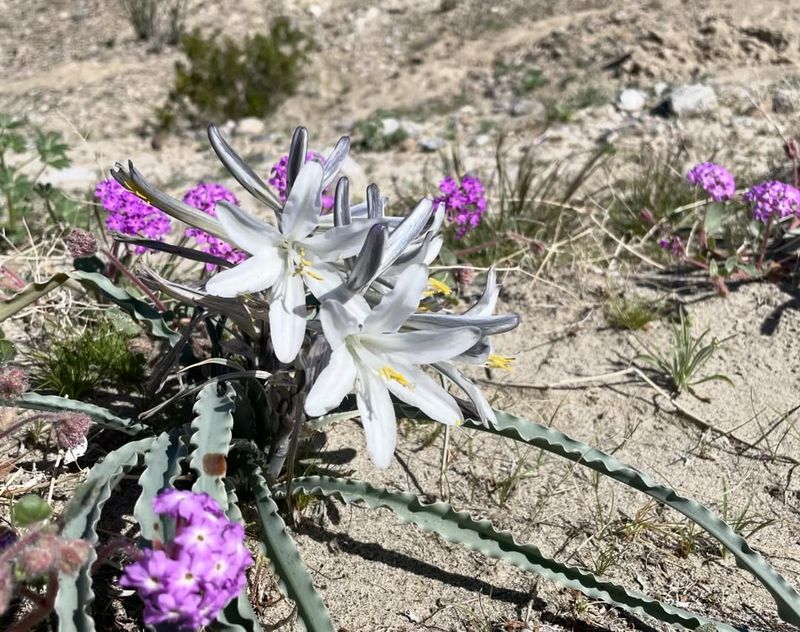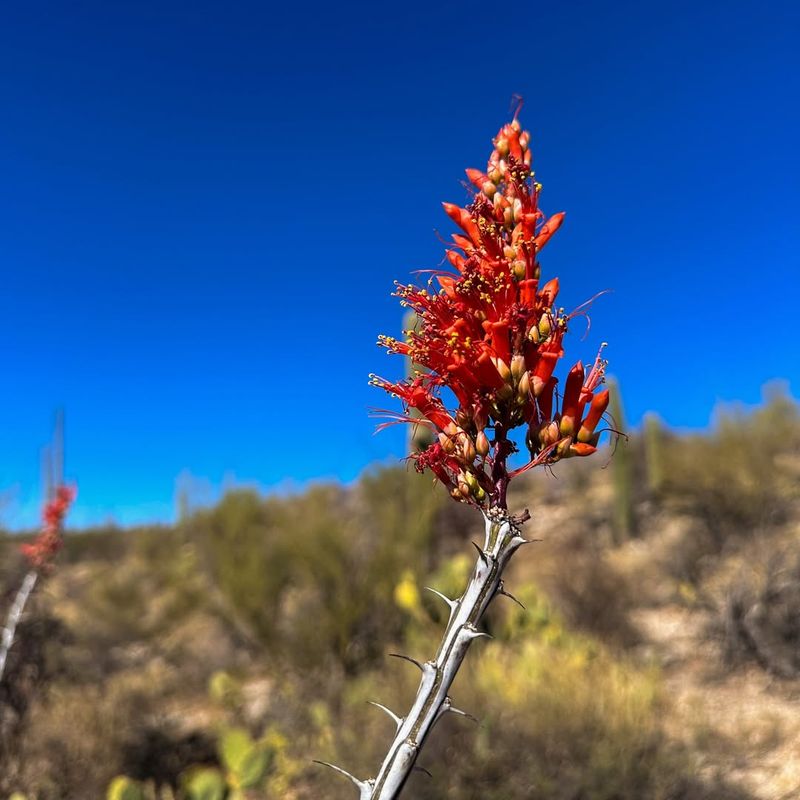Gardening in arid climates can be a rewarding challenge, filled with discoveries of plants that laugh in the face of drought.
I’ve watched in awe as native plants not only survived but thrived in the dry corners of my garden, and it’s time to share these resilient companions with you.
1. Agave Americana
In the heart of arid landscapes, a spectacular rosette steals the show with its architectural flair. Agave Americana, known for its striking, fleshy leaves, is a succulent that embraces the sun with grace. Its thick, pointed leaves form a majestic rosette, making it a centerpiece in any dry garden.
Thriving on neglect, this plant requires minimal water, drawing its strength from the depths of its roots. With time, its towering flower stalk emerges, a testament to patience and resilience. This native wonder not only survives but also adorns dry gardens, offering both beauty and low maintenance.
2. Desert Marigold
Golden hues dance upon the dry earth, catching the eye with cheerful blooms. The Desert Marigold, or Baileya multiradiata, brightens up any arid garden with its sunny disposition. Its daisy-like flowers contrast beautifully against its silver-green foliage.
Despite the harsh conditions, this plant flourishes, requiring little more than the occasional rain. It thrives where others wilt, offering long-lasting color from spring through fall. This hardy perennial not only decorates the landscape but also attracts pollinators, making it a vital addition to any eco-friendly garden.
3. California Poppy
Fields burst with color as delicate petals sway in the breeze. The California Poppy, renowned for its vibrant orange blossoms, is a symbol of resilience and beauty. This native wildflower blooms profusely, creating seas of orange that captivate the senses.
With minimal care, it thrives in dry conditions, painting landscapes with its fiery hues. Its ability to self-seed ensures a continuous display year after year. As a drought-tolerant gem, the California Poppy not only thrives in dry gardens but also supports local ecosystems through its vibrant presence.
4. Sagebrush
The air is filled with a familiar, aromatic scent, as the resilient shrub stands firm. Sagebrush, known for its silvery-green leaves, is a stalwart of the dry garden. This hardy perennial thrives in rocky, sandy soils, offering both beauty and functionality.
Its aromatic foliage provides a haven for local wildlife, supporting a diverse ecosystem. Sagebrush’s ability to withstand drought conditions makes it an indispensable part of any dry garden. By incorporating this native plant, gardeners can enjoy its subtle beauty and ecological benefits throughout the year.
5. Red Yucca
Slender spikes reach skyward, adding dynamic vertical interest to the landscape. The Red Yucca, or Hesperaloe parviflora, captivates with its tall, arching flower stalks adorned with tubular red blossoms. Its evergreen clumps of narrow, sword-like leaves offer year-round appeal.
This drought-tolerant plant thrives in full sun, requiring minimal water once established. Its showy flowers attract hummingbirds, adding movement and life to dry gardens. The Red Yucca not only provides visual interest but also supports local wildlife, making it a versatile and beautiful choice for arid landscapes.
6. Purple Coneflower
Vibrant petals radiate from a prominent center, creating a spectacle of color. The Purple Coneflower, or Echinacea purpurea, is celebrated for its striking pink-purple blooms and medicinal properties. Its daisy-like flowers stand out in dry prairies, offering both beauty and resilience.
Thriving in well-drained soils, this perennial requires minimal care, making it perfect for low-maintenance gardens. Its long-lasting blooms attract butterflies and bees, supporting pollinators in arid regions. The Purple Coneflower not only adds color but also enriches dry gardens with its ecological contributions.
7. Mexican Feather Grass
Elegant plumes sway gracefully, adding movement to the static landscape. Mexican Feather Grass, known for its delicate, flowing appearance, brings softness to arid gardens. Its fine, wispy foliage dances with the wind, creating a dynamic interplay of texture and light.
This ornamental grass thrives in poor, well-drained soils and requires little water, embodying resilience and grace. Its golden hues catch the sunlight, adding warmth and contrast to dry settings. As a versatile and drought-tolerant choice, Mexican Feather Grass effortlessly enhances the aesthetic appeal of any garden.
8. Blue Fescue
Clusters of blue-grey foliage add a cool, calming tone to the dry garden palette. Blue Fescue, a compact ornamental grass, is renowned for its unique color and texture. Its fine, needle-like blades form neat clumps, providing structure and contrast.
Thriving in full sun and poor soils, this grass requires minimal care, making it ideal for dry gardens. Blue Fescue’s year-round interest and drought tolerance make it a reliable choice for adding visual interest. Its understated elegance complements a variety of native plants, creating a harmonious and low-maintenance landscape.
9. Yarrow
Flat-topped blooms create a delightful contrast against the rugged terrain. Yarrow, known for its feathery foliage and clusters of tiny flowers, is a versatile addition to any dry garden. This perennial plant thrives in well-drained soils, offering both beauty and ecological benefits.
Its ability to attract beneficial insects supports garden health, making it a valuable companion plant. Yarrow’s drought tolerance and adaptability make it a reliable choice for low-maintenance landscapes. With its long-lasting blooms, this native plant adds charm and function to dry gardens, enhancing both aesthetics and biodiversity.
10. Prickly Pear Cactus
In the midst of arid landscapes, paddle-like pads hold a timeless allure. The Prickly Pear Cactus, with its distinctive flat segments, is a desert classic. Known for its vibrant flowers and edible fruits, this cactus adds both beauty and utility to dry gardens.
Thriving in sandy soils, it requires minimal water, making it an ideal choice for drought-prone areas. Its spiny pads deter wildlife, while its flowers attract pollinators, balancing beauty and defense. The Prickly Pear Cactus embodies resilience and adaptability, making it a staple in sustainable gardening.
11. Texas Sage
Subtle hues of purple burst forth amidst the rugged terrain, painting the landscape with color. Texas Sage, also known as Leucophyllum frutescens, is a standout shrub, celebrated for its striking blooms and silvery foliage.
This drought-tolerant plant thrives in full sun and poor soils, requiring little to no maintenance. Its flowers attract pollinators, supporting local ecosystems while providing visual appeal. As a native shrub, Texas Sage not only withstands harsh conditions but enhances dry gardens with its vibrant presence and ecological benefits.
12. Blackfoot Daisy
Small white blossoms dance in the breeze, adding a touch of elegance to the landscape. The Blackfoot Daisy, or Melampodium leucanthum, is a charming perennial native to arid regions. Its daisy-like flowers contrast beautifully against its dark green foliage.
This resilient plant thrives in full sun and rocky soils, requiring minimal care. Its long blooming period ensures continuous color, while its drought tolerance makes it a valuable addition to dry gardens. The Blackfoot Daisy delights with its delicate beauty, offering both aesthetic charm and hardiness.
13. Apache Plume
Feathery flowers add a whimsical touch to the arid landscape, swaying gently in the wind. Apache Plume, or Fallugia paradoxa, is a unique shrub known for its distinctive seed heads and delicate blooms.
This native plant thrives in poor, well-drained soils, requiring little water once established. Its ability to attract birds and pollinators enhances garden biodiversity. With its striking appearance and ecological benefits, Apache Plume not only beautifies dry gardens but also supports local wildlife.
Its adaptability and low maintenance make it an ideal choice for sustainable landscaping.
14. Penstemon
Tall spikes of blossoms rise above the rugged terrain, adding vertical elegance to the scene. Penstemon, with its tubular flowers, is a perennial favorite in dry gardens. Known for its vibrant colors and adaptability, it flourishes in rocky, well-drained soils.
This hardy plant attracts hummingbirds and bees, supporting pollinators in arid regions. With minimal watering needs, Penstemon thrives in challenging conditions, offering both beauty and ecological benefits. Its striking blooms and drought tolerance make it a valuable asset to any dry landscape.
15. Creeping Thyme
A carpet of vibrant blooms stretches across the ground, forming a living tapestry. Creeping Thyme, known for its aromatic foliage and delicate flowers, is a versatile ground cover. This low-growing perennial thrives in full sun and poor soils, requiring minimal water.
Its fragrant foliage releases a pleasant scent when walked upon, adding sensory appeal to dry gardens. With its ability to attract pollinators and suppress weeds, Creeping Thyme is both beautiful and functional. It offers a low-maintenance solution for covering bare ground while enriching garden biodiversity.
16. Bottlebrush
Bright, brush-like blooms add a splash of color to the arid landscape, catching the eye with their unique form. The Bottlebrush, known for its striking red flowers, is a standout shrub in dry gardens.
This drought-tolerant plant thrives in full sun and poor soils, requiring little to no maintenance. Its vibrant flowers attract pollinators, supporting local ecosystems while providing visual appeal. As a native shrub, the Bottlebrush not only withstands harsh conditions but enhances dry gardens with its vibrant presence.
17. Brittlebush
Silvery foliage contrasts beautifully against the rugged backdrop, creating a tapestry of color and texture. Brittlebush, with its bright yellow flowers, is a charming addition to arid landscapes.
This hardy shrub thrives in well-drained soils, requiring minimal care once established. Its vibrant blooms attract pollinators, supporting biodiversity in dry gardens. With its drought tolerance and adaptability, Brittlebush is a reliable and beautiful choice for low-maintenance landscapes.
18. Desert Willow
Graceful blooms nod in the gentle breeze, bringing a touch of elegance to the arid setting. The Desert Willow, known for its slender leaves and trumpet-shaped flowers, is a standout tree in dry landscapes.
Thriving in well-drained soils, this tree requires minimal water, making it ideal for drought-prone areas. Its showy flowers attract hummingbirds and bees, supporting pollinators in arid regions. With its graceful form and ecological benefits, the Desert Willow not only beautifies dry gardens but also enriches local ecosystems.
19. Russian Sage
Tall spikes of lavender-hued flowers sway above the silvery foliage, creating a striking visual display. Russian Sage, known for its aromatic leaves and vibrant blooms, is a favorite in dry gardens.
This drought-tolerant perennial thrives in full sun and poor soils, requiring little maintenance. Its flowers attract pollinators, supporting biodiversity while adding color and texture to the landscape. With its long-lasting blooms and resilience, Russian Sage is a beautiful and practical choice for arid environments.
20. Autumn Sage
Bright blooms burst forth amidst the greenery, adding a splash of color to the scene. Autumn Sage, with its vibrant red flowers, is a standout perennial in dry gardens.
Thriving in full sun and well-drained soils, this plant requires minimal water, making it ideal for drought-prone areas. Its flowers attract hummingbirds and butterflies, supporting pollinators while providing visual appeal. With its striking blooms and ecological benefits, Autumn Sage enriches dry gardens with both beauty and biodiversity.
21. Desert Globe Mallow
Clusters of vibrant blossoms stand out against the desert backdrop, adding a touch of vibrancy to the arid landscape. The Desert Globe Mallow, known for its orange flowers, is a resilient perennial native to dry regions.
This hardy plant thrives in poor soils, requiring minimal care and providing a splash of color throughout the growing season. Its ability to attract pollinators supports biodiversity, making it a valuable addition to eco-friendly gardens. With its drought tolerance and striking appearance, Desert Globe Mallow is a must-have for sustainable landscaping.
22. Silver Bush Lupine
Striking spikes of color rise above the silvery foliage, creating a captivating visual contrast. Silver Bush Lupine, with its blue-purple flowers, is a standout perennial in dry gardens.
This native plant thrives in well-drained soils, requiring minimal water once established. Its flowers attract pollinators, supporting local ecosystems while adding beauty to the landscape. With its drought tolerance and ecological benefits, Silver Bush Lupine enhances dry gardens with both visual appeal and biodiversity.
23. Desert Lavender
Pale purple blooms sway gently in the breeze, adding a touch of elegance to the dry landscape. Desert Lavender, known for its aromatic foliage and delicate flowers, is a charming addition to arid gardens.
This drought-tolerant shrub thrives in full sun and poor soils, requiring little maintenance. Its fragrant leaves attract pollinators, supporting biodiversity while enhancing sensory appeal. With its striking appearance and ecological benefits, Desert Lavender enriches dry gardens with both beauty and functionality.
24. Rock Rose
Delicate petals unfurl in the sunlight, creating a vibrant tapestry of color against the rugged terrain. The Rock Rose, known for its pink blooms, is a resilient shrub in dry gardens.
This drought-tolerant plant thrives in poor soils, requiring minimal care once established. Its flowers attract pollinators, supporting local ecosystems while adding visual appeal. With its striking blooms and adaptability, the Rock Rose is a beautiful and practical choice for arid landscapes.
25. Coral Bells
Bright blooms add a pop of color to the shaded corners of the garden, creating a lively contrast to the greenery. Coral Bells, known for their red flowers, are a versatile choice for dry gardens.
This perennial thrives in well-drained soils, requiring minimal water and providing year-round interest. Its ability to attract pollinators supports biodiversity, making it a valuable addition to eco-friendly gardens. With its vibrant appearance and ecological benefits, Coral Bells enrich dry gardens with both beauty and functionality.
26. Indian Blanket
Vibrant blooms blanket the landscape, offering a kaleidoscope of color to the arid meadow. The Indian Blanket, known for its red and yellow flowers, is a dazzling addition to dry gardens.
This drought-tolerant annual thrives in poor soils, requiring minimal care while providing a long-lasting display. Its ability to attract pollinators supports biodiversity, making it a valuable addition to sustainable landscapes. With its striking appearance and resilience, Indian Blanket is a must-have for colorful, eco-friendly gardens.
27. Blue Flax
Delicate blooms sway gracefully in the breeze, adding a touch of elegance to the dry landscape. Blue Flax, known for its dainty blue flowers, is a charming addition to arid gardens.
This perennial thrives in well-drained soils, requiring minimal water and offering a splash of color throughout the growing season. Its ability to attract pollinators supports biodiversity, making it a valuable addition to eco-friendly gardens. With its delicate appearance and ecological benefits, Blue Flax enriches dry gardens with both beauty and functionality.
28. Desert Zinnia
Bright blooms bring life to the sun-drenched landscape, offering a cheerful splash of color. The Desert Zinnia, known for its yellow flowers, is a hardy addition to arid gardens.
This drought-tolerant plant thrives in full sun and poor soils, requiring minimal care while providing a long-lasting display. Its ability to attract pollinators supports biodiversity, making it a valuable addition to sustainable landscapes. With its cheerful appearance and resilience, Desert Zinnia is a must-have for colorful, eco-friendly gardens.
29. Chaparral Sage
Aromatic foliage fills the air with a soothing scent, creating a sensory experience in the garden. Chaparral Sage, known for its purple flowers, is a standout shrub in dry landscapes.
This drought-tolerant plant thrives in full sun and poor soils, requiring little maintenance. Its fragrant leaves attract pollinators, supporting biodiversity while enhancing sensory appeal. With its striking appearance and ecological benefits, Chaparral Sage enriches dry gardens with both beauty and functionality.
30. Parry’s Agave
Sculptural leaves form a striking rosette, adding architectural interest to the landscape. Parry’s Agave, known for its thick leaves, is a resilient succulent in dry gardens.
This drought-tolerant plant thrives in full sun and poor soils, requiring minimal water once established. Its ability to attract pollinators supports biodiversity, making it a valuable addition to sustainable landscapes. With its architectural beauty and resilience, Parry’s Agave is a must-have for eco-friendly gardening.
31. Desert Senna
Bright blooms burst forth amidst the greenery, adding a splash of color to the scene. Desert Senna, known for its yellow flowers, is a hardy addition to arid gardens.
This drought-tolerant shrub thrives in full sun and poor soils, requiring minimal care once established. Its ability to attract pollinators supports biodiversity, making it a valuable addition to sustainable landscapes. With its vibrant appearance and resilience, Desert Senna is a must-have for eco-friendly gardening.
32. Angelita Daisy
Cheerful blooms dance in the breeze, adding a touch of joy to the dry landscape. Angelita Daisy, known for its yellow flowers, is a delightful addition to arid gardens.
This perennial thrives in full sun and poor soils, requiring minimal water and providing a long-lasting display. Its ability to attract pollinators supports biodiversity, making it a valuable addition to eco-friendly gardens. With its bright appearance and ecological benefits, Angelita Daisy enriches dry gardens with both beauty and functionality.
33. Desert Lily
Elegant blooms rise above the sand, adding a touch of grace to the arid setting. The Desert Lily, known for its white flowers, is a striking addition to dry gardens.
This perennial thrives in sandy soils, requiring minimal water and offering a burst of color during the blooming season. Its ability to attract pollinators supports biodiversity, making it a valuable addition to sustainable landscapes. With its graceful appearance and resilience, Desert Lily is a must-have for eco-friendly gardening.
34. Ocotillo
Tall canes reach skyward, their thorny branches adorned with vibrant blooms. Ocotillo, known for its red flowers, is a striking addition to arid landscapes.
This hardy plant thrives in rocky soils, requiring minimal care and providing an architectural focal point. Its ability to attract pollinators supports biodiversity, making it a valuable addition to eco-friendly gardens. With its unique structure and resilience, Ocotillo adds both visual interest and ecological benefits to dry gardens.

